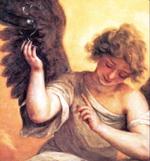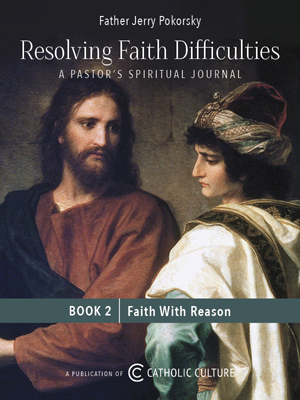The Tears of Our Lady
by Zsolt Aradi
The warnings of Our Lady to the humble nun Catherine Laboure were only the beginning of a series of apparitions in France and in the world. Mary did not wait until people saw with their eyes that her prophecies came true. On September 19, 1846, she visited two children, Melanie Calvat and Maximin Giraud. The families of the two children could neither read nor write. This timid, almost ignorant girl spent her life in constant contact with nature on the arid mountain plateau where the scorching sun in the summer and the blowing alpine snow storm winds in the winter test human endurance. From the age of nine she had worked hard tending the cows of some wealthy peasants. Maximin Giraud, the eleven-year-old boy, on his first cow-herding job away from home, met her by chance in the mountains the day prior to the apparition. The two children were strangers to one another. Maximin showed more intelligence and vivacity, but, like Melanie, spoke only the dialect of the region and was equally uneducated.
Our Lady appeared to these two children on the top of the mountain called La Salette. On this particular day, September 19, 1846, the two cow herders fell asleep around noontime in the great heat. They were on a mountain slope at an altitude of about six thousand feet. When they woke up, they saw a beautiful Lady sitting on a rock in the bed of a dried stream. She wept bitterly. Finally, after reassuring the fearful children she began to talk to them. Later, she gave to each child separately a secret, which they never revealed to anyone except to Pope Pius IX.
One of the extraordinary features of the apparitions at La Salette is that the children not only understood the long message, but could repeat it several times without hesitation. The message of La Salette, accompanied with the bitter tears of Our Lady is even more significant than that accorded to Catherine Laboure at the Rue de Bac: "If my people do not humble themselves, I will be forced to let go of the arms of my Son . . . I have suffered for you for a long time . . . If I would not have my Son abandon you, I am forced to pray to Him without ceasing. But as for you, you pay no heed." The message of La Salette is one of the bitterest: "There will be great famine, children under seven will be seized with palsy and die in the arms of those who nurse them. The rest will do penance because of the famine." But in addition to this prophecy, she spoke with love and assurance: "If the people are converted, the very rocks and stones will turn to heaps of grain…"
Thus, these two illiterate mountain children, living in one of the most remote parts of Europe, were entrusted to pass on this message to the people. Melanie and Maximin did their task as the Lady required. They related accurately the complicated message both in the French they did not understand and in their dialect. No threat, beating or promise could induce them to restrict their message. The villagers at once searched the high mountaintop but there was not a bush that could have afforded concealment. Instead, they discovered that the riverbed where Our Lady sat, always dry after June, was now flowing freely. They bathed the eyes of a nearly blind girl with the water from this stream and she regained her sight instantly. Leon Bloy, the great French writer, in a letter to Raissa Maritain, says that he too was inspired by the Notre Dame de La Salette "by that great Virgin in tears, above that little fountain which seems to flow from her eyes."
The message of La Salette was very grave. Pius IX, when asked about the secrets confided by Melanie and Maximin, said: "These are the secrets of La Salette: Unless the world repent it shall perish."
And this reminder was directed not only to the people of that mountain region of France, but to the whole world for eternity.
This item 3050 digitally provided courtesy of CatholicCulture.org






